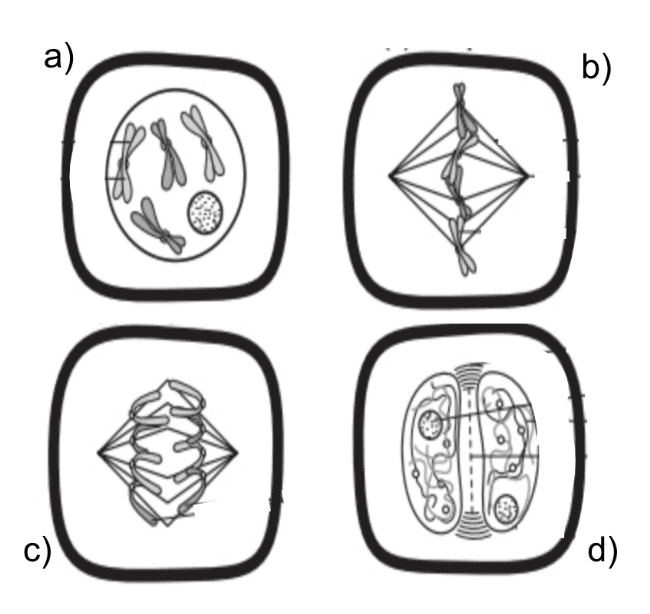
EOC Review
Quiz by Holly Duckworth
Feel free to use or edit a copy
includes Teacher and Student dashboards
Measure skillsfrom any curriculum
Tag the questions with any skills you have. Your dashboard will track each student's mastery of each skill.
- edit the questions
- save a copy for later
- start a class game
- automatically assign follow-up activities based on students’ scores
- assign as homework
- share a link with colleagues
- print as a bubble sheet
- Q1
This is an illustration of a plant cell undergoing mitosis. Put the stages of mitosis in order.
Users link answersLinking300s - Q2
Which of these processes makes it possible for cells to take in water?
A. osmosis
D. respiration
B. mitosis
C. photosynthesis
30s - Q3
Which represents the most primitive part of the cladogram?
III
I
II
120s - Q4
What explains the changes that occurred between the two biomolecules?
A deletion mutation occurred while the biomolecule was being translated
A substitution mutation occurred while the biomolecule was being replicated
An insertion mutation occurred while the biomolecule was being transcribed.
An insertion mutation occurred while the biomolecule was replicating
30s - Q5
Which is true referencing the species illustrated in the cladogram below?
Species Z is more primitive than species X.
Both species Y and species Z are warm blood.
Species X and species Y are closer related than species Y and species Z.
While species X. species Y, and species Z are animals, only species Y and species Z have vertebrae.
30s - Q6
A Biomolecule is illustrated below. What subunits make-up the molecule?
carbohydrate
amino acid
lipid
nucleotide
30s - Q7
Which is true regarding the biomolecules below?
Both molecules are nucleic acid
The both codons, GAC and UGC translates into the amino acid Glycine
The codon GAC translates into the amino acid Glycine
Both molecules are amino acid
30s - Q8
The buffering of blood pH in the body is most directly related to which process?
Aging of the organs
cellular homeostasis
recombination of genes
synthesis of organic material
30s - Q9
29. How does meiosis contribute to genetic variation?
D. The individual cell splits into two exact copies of the original cell, therefore creating genetic variation.
B. A process in meiosis called crossing-over is used to make every chromosome the same.
C. A process in meiosis called crossing-over is used to create unique chromosome combinations.
A. The individual cell does not replicate, therefore genetic variation occurs.
30s - Q10
Which will most likely cause an increase in the frequency of genetic mutations in humans?
Increased exposure to mold spores in the air?
Increased exposure to the rising levels of atmospheric carbon dioxide
Increased exposure to X-rays
Increased exposure to bacteria in drinking water
30s - Q11
The illustration is the changes of an insect population over several farming seasons. If the same pesticide continues to be used, what may happen to the population of the insects?
Neither the dark or light colored insects are affected by the pesticide. Both populations will even out.
The dark colored insects have successfully out competed the light colored insects for natural resources.
The light colored insects are better suited to the environment and the population will continue to increase.
Although the light insects have better camouflage, the frequency of the dark insects will increased and the light colored insects will decrease due to pesticide resistance.
30s - Q12
What advantage is provided by this process?
Daughter cells are genetically identical to parent cells.
Daughter cells maintain the same number of chromosomes as the parent cell.
Increase diversity within the daughter cells.
Daughter cells have half the number of chromosomes as the parent cell.
30s - Q13
Compare and contrast prokaryotes and eukaryotes
Users sort answers between categoriesSorting30s - Q14
10. In which cell organelle does cellular respiration mainly occur?
vacuole
nucleus
chloroplast
mitochondria
30s - Q15
Which is a primary function of a vacuole in a cell?
storage
enzyme production
reproduction
protein synthesis
30s
